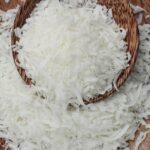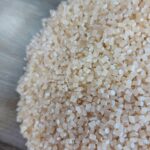CASHEW NUT SHELL OIL
In confectionery production, achieving the perfect texture is essential for product success. Whether you’re making chewy candies, gummies, or marshmallows, texture plays a critical role in consumer satisfaction. Modified tapioca starch has emerged as a versatile and valuable ingredient, offering multiple advantages in improving confectionery textures. Let’s explore five key benefits of using modified tapioca starch in this context.


Table of Contents
Toggle1. Improved Chewiness and Elasticity
Modified tapioca starch is particularly effective in enhancing chewiness and elasticity in confectionery products such as gummies, chewy candies, and licorice. It helps to achieve an ideal balance between softness and firmness, creating the perfect bite. For example, in gummy bears, this starch ensures that the candy is chewy without being too sticky or tough. Its unique properties allow manufacturers to fine-tune texture, making the product more enjoyable for consumers.
2. Better Gelatinization for Smooth Consistency
One standout feature of modified tapioca starch is its enhanced gelatinization ability, which helps create smooth and consistent textures in candies like marshmallows or soft jellies. When heated, the starch forms stable gels that give manufacturers better control over the texture. This results in products with the desired level of firmness or softness, ensuring that they maintain their quality during production and storage.
3. Enhanced Stability Under Temperature Fluctuations
Confectionery products are often sensitive to changes in temperature, which can affect their texture. Modified tapioca starch provides stability, allowing candies to retain their desired texture whether exposed to heat or cold. This benefit is particularly useful for products distributed globally, where temperature fluctuations during transport and storage can be a challenge. For example, chewy candies made with modified tapioca starch won’t become too hard in cold climates or too soft in warmer environments.
4. Improved Mouthfeel for a Superior Consumer Experience
Mouthfeel is crucial in the confectionery industry, and modified tapioca starch helps improve the overall sensory experience. It provides a smoother, more pleasant texture in a variety of products, from caramels and taffies to fudges. The starch prevents graininess and ensures a consistent texture, enhancing the overall quality and making the product more appealing to consumers.
5. Cost-Effective and Versatile Ingredient
One of the main advantages of modified tapioca starch is its cost-effectiveness. It can replace more expensive stabilizers or gelling agents like gelatin, while still delivering excellent results. Moreover, its versatility allows manufacturers to use it in a wide range of products, from hard candies to soft, chewy treats. Additionally, being gluten-free, it supports the growing demand for allergen-friendly and vegan products, making it an excellent option for confectionery producers.


Conclusion
Modified tapioca starch is a powerful ingredient in the confectionery industry, offering benefits that enhance both texture and stability. From improving chewiness to providing temperature resistance, it is a versatile and cost-effective solution for manufacturers. As consumer expectations evolve, particularly for gluten-free and vegan options, modified tapioca starch offers an effective way for brands to innovate and stand out in a crowded market.












